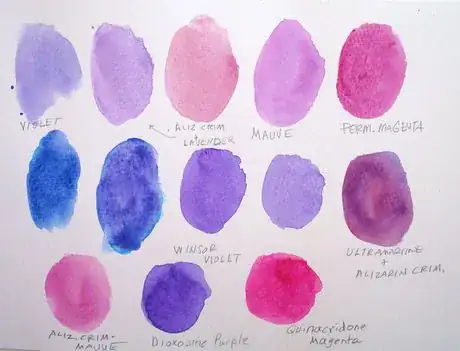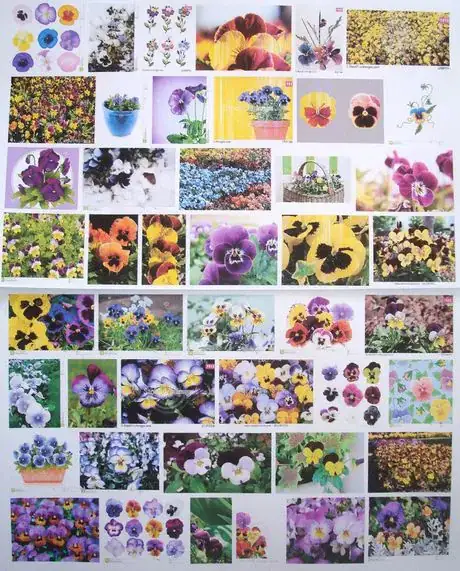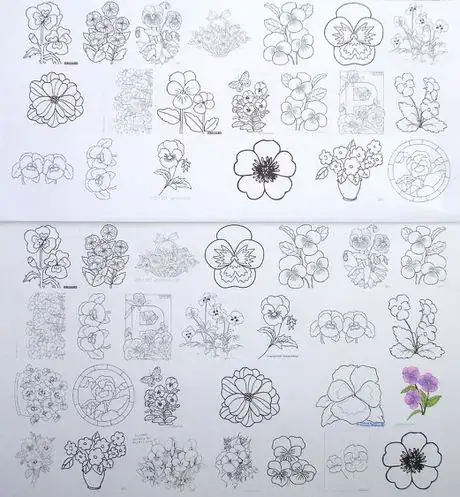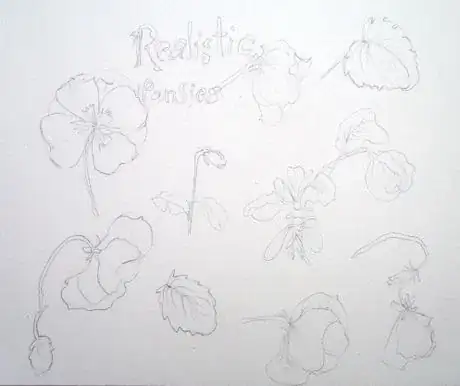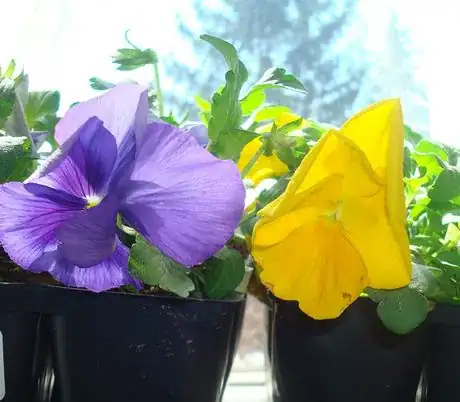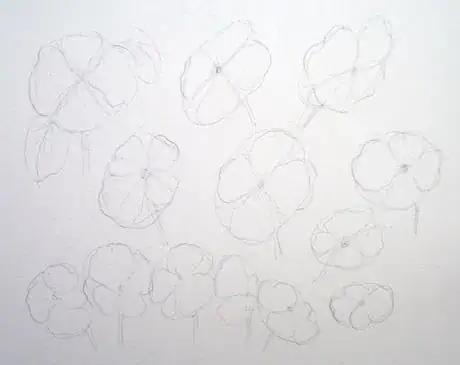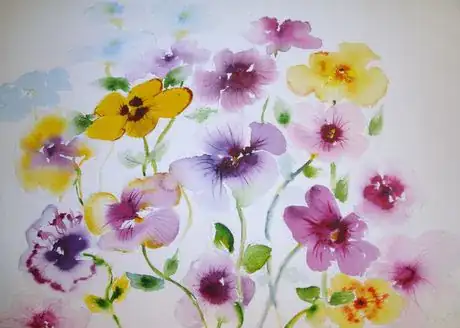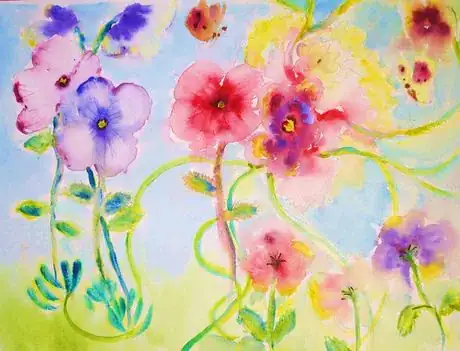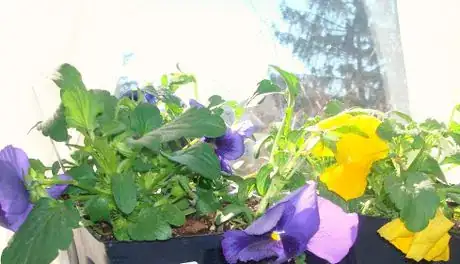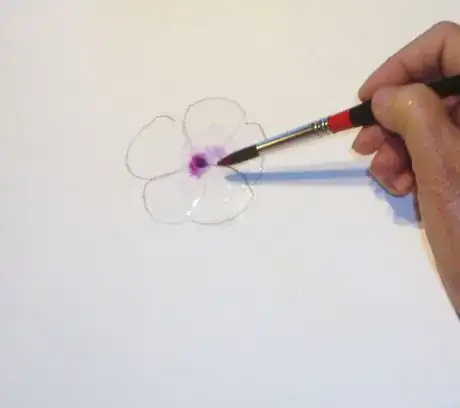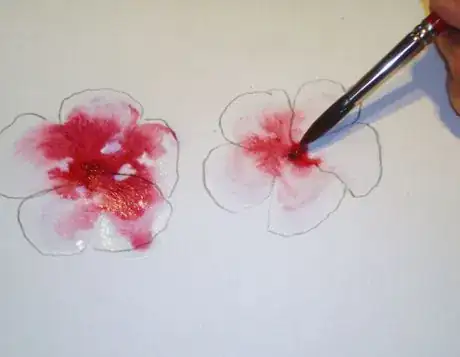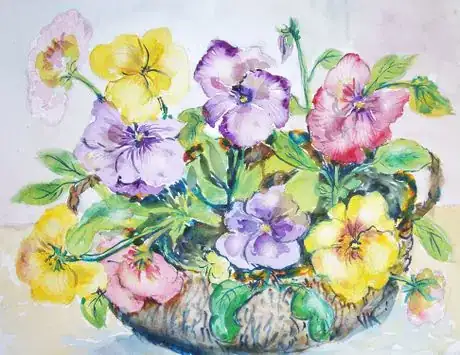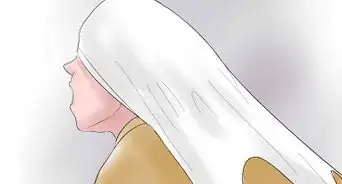This article was co-authored by Virginia Kelley, MA, a trusted member of wikiHow's volunteer community. Virginia Kelley is an artist and art teacher from New York with over 30 years of experience. She has both a Bachelor's and a Master's degree in Art Education from SUNY-Buffalo State and has taught art at the K-12 and college levels. For the last 20 years, she has focused her work and teaching on watercolor.
wikiHow marks an article as reader-approved once it receives enough positive feedback. In this case, 95% of readers who voted found the article helpful, earning it our reader-approved status.
This article has been viewed 34,988 times.
For all their delicate charm, pansies are a hardy flower. They lend themselves to watercolor because their petals look almost as though they have been colored by an artist. Their rich, velvety red, violet, purple and yellow blossoms have a backdrop of spiked green leaves. If you haven't tried painting pansies, do it. They aren't hard and the results rival the real thing.
Steps
Planning
-
1Assemble basic watercolor supplies. Either tube or good quality pan colors work fine if you remember to activate them with some clear water before using. Gather as many purples and violet tubes as you can find. This is one color, that while it is possible to mix from the primaries, getting all the shades and nuances of color requires pre-mixed tubes of paint.
- In addition to paints, you will need an assortment of watercolor or all purpose artist's brushes in various sizes. Find an ordinary pencil, an eraser, an 11" X 14" piece of watercolor paper, a support board, a water bucket and tissues.
-
2Purchase a live pansy plant, if possible. The internet has pictures galore. Google free stock pictures to see the wide variety of colors of the pansy.
-
3Look at coloring pages of pansies also. They will give you ideas for containers for the plant and how to compose your page.
-
4Sketch some pansies in pencil. If you have the real thing, look closely at it and try to replicate the features of the plant, the clusters of blossoms, the greenery, stems, buds and even a blossom past its prime and wilting. These preliminary information gathering sketches will help you understand the flower better and give you confidence for starting a painting of it.
-
5Locate the center most point of the flower. Surprisingly, it might be a little off exact center.
-
6Count the number of petals and how they are positioned. There are five, two sets of smaller ones and a larger one underneath. Look closely to see this in actuality, but don't worry about it too much. Just do five petals, overlapping them slightly.
-
7Draw the stems lightly, even if they eventually won't be visible. Have the stem, even though it is hidden beneath the flower begin at the center point of the flower. Note how slender it is and that is can curve slightly.
-
8Ask and answer the artist's age-old questions about your subject and background. What type of container will the pansies be in? Will they be in a garden, planted in the earth? What other flowers might surround them?
- Think about the background and begin to get ideas for how you will paint it.
Sketching
-
1Get your watercolor paper and begin your layout. Lightly sketch how you want the overall painting to look.
-
2Do simple, free form circles for the outermost shape of each blossom.
-
3Find the center of each blossom. Draw a small circle for the center. Paint it yellow, let it dry and mask it out to preserve the brightness of the yellow. Use a dot of masking fluid or a spot of masking tape you've torn to shape.
-
4Have the petals grow out from the center point. Erase the parts of the circle you made for a guide where it isn't needed.
-
5Remember, be a little whimsical, let the pansies dance.
-
6Note how the outer edges of the petals touch the circle. Give them wavy edges.
-
7Draw the leaves. Leaves function to join the colorful blossoms so have some of each plant touch the others. Show a part of a stem in a few places. Those spindly stems will help to guide the viewer's eye through the painting.
Painting
-
1Wet the blossom carefully with clean water and a pointed brush. This is the point where magic occurs.
-
2Drop a spot of color onto the flower, at the center point. Use thick paint because the paper is wet. Watch as it spreads across the wet petal but try to let the paint do its thing as it reacts to the water.
-
3Take good care of your pansy plants. They are a lasting flower and can even withstand a lot very cool temperatures when planted outdoors. Having a pansy painting, though, allows you to enjoy the sweet face of the pansy all year 'round.
Community Q&A
-
QuestionI'm 64. Can I learn to watercolor?
 Community AnswerYes. You can learn to do anything if you have enough time to practice and if you put your heart into it.
Community AnswerYes. You can learn to do anything if you have enough time to practice and if you put your heart into it. -
QuestionHow can I fix my pansy painting if I didn't blend the flowers properly?
 Community AnswerAdd more or try and redefine the edges on your flower. Try adding more color or adding darker colors to the edges of the flowers.
Community AnswerAdd more or try and redefine the edges on your flower. Try adding more color or adding darker colors to the edges of the flowers.
